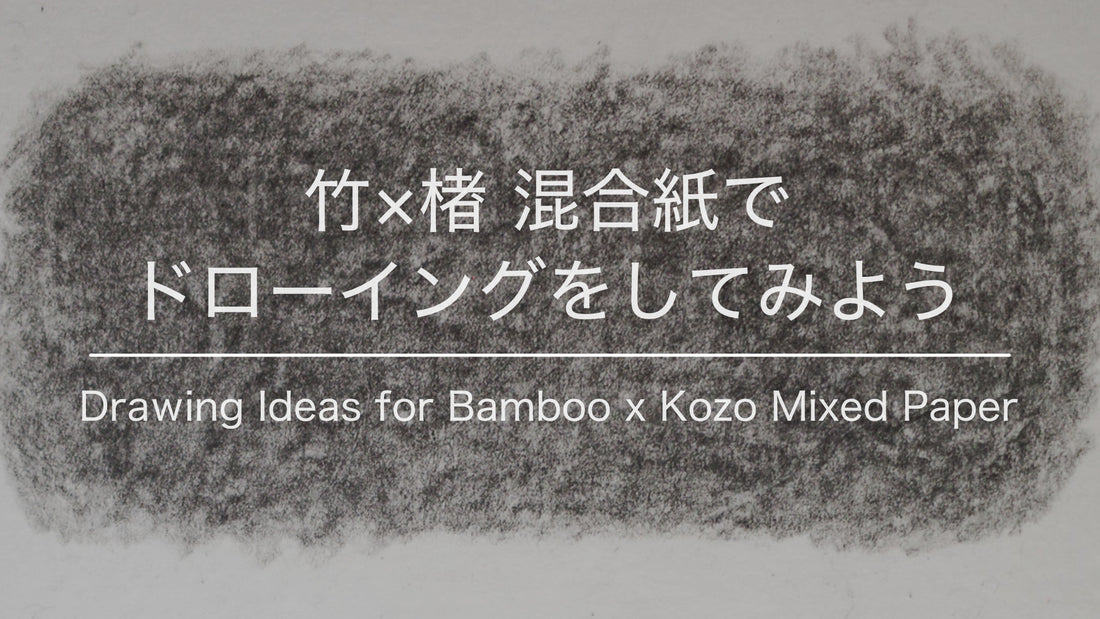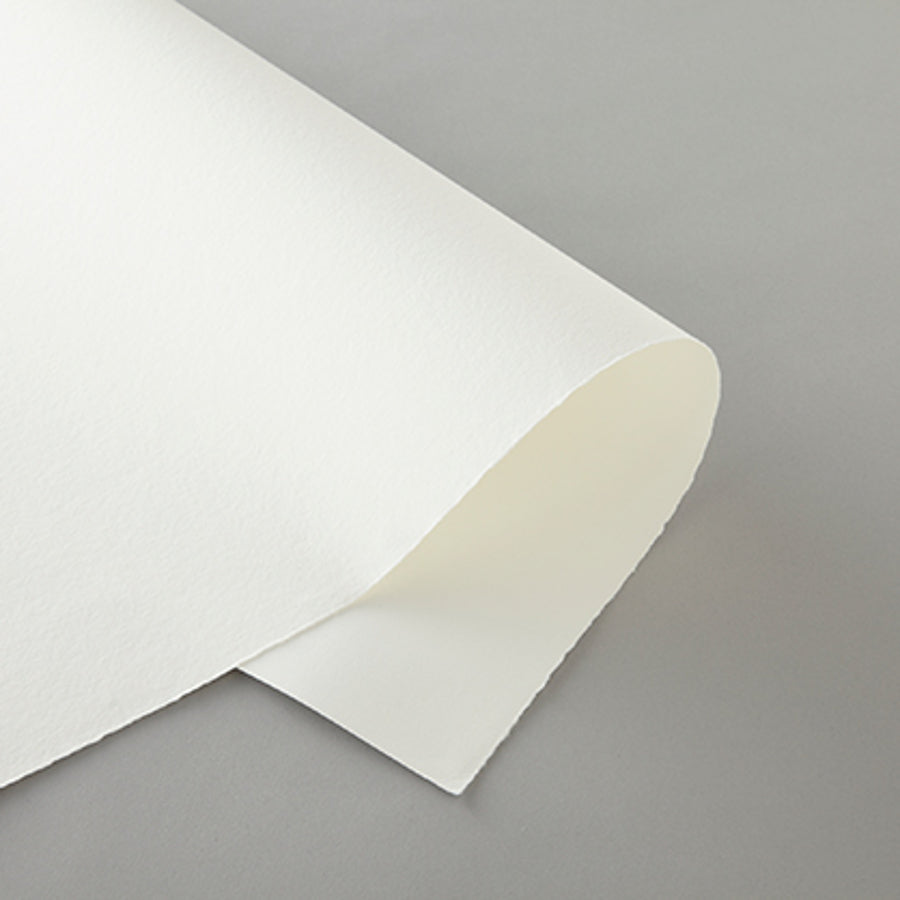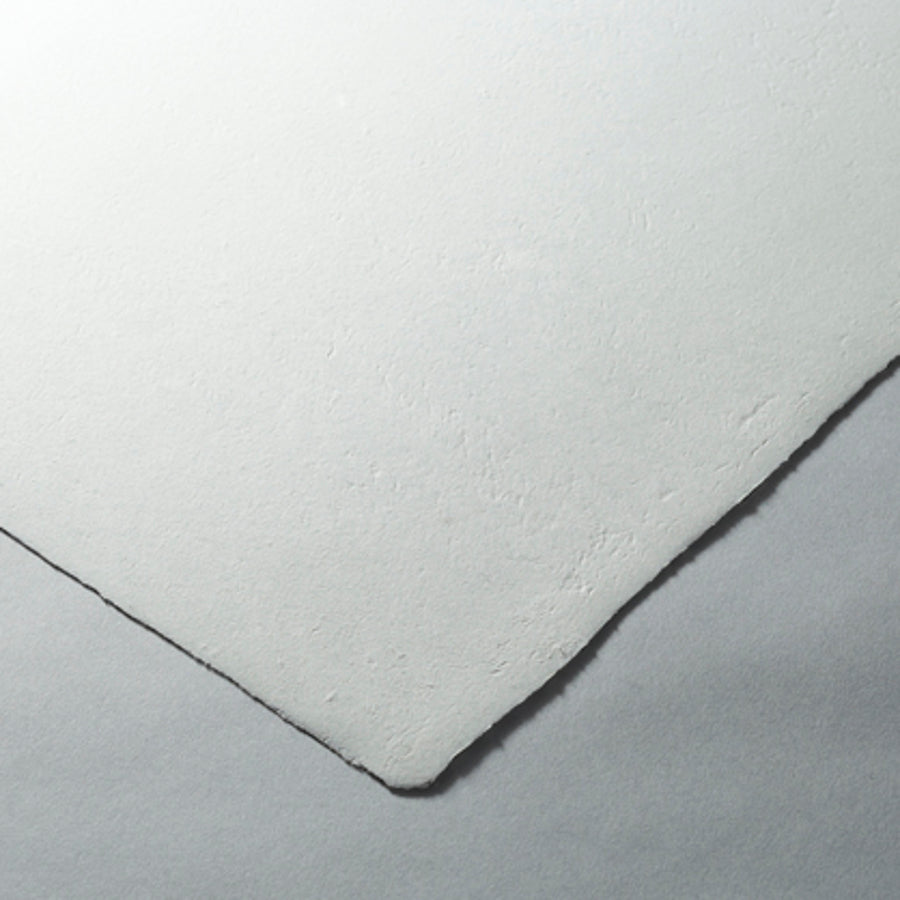Washi (Japanese paper) is a word describing handmade paper that has been used in Japan for a long time. It is made mainly from kozo (paper mulberry), mitsumata (oriental paperbush) and gampi (Japanese shrubs), and is considered to have a stronger paper quality than Western paper.
Although it is difficult to define washi paper in general nowadays, since there are so many different types, including those made by machine and made of different materials, one of the examples of washi paper is kozo paper. It has a long history among traditional papers and is made of paper mulberry, known for its long and sturdy fibers.
Ma-shi (hemp paper) made of hemp is often used as a substrate in Nihonga (Japanese painting) technique but its raw materials can vary as well.
Moreover, there is also a product called bamboo washi made from bamboo pulp and recycled paper, which has a moderate thickness of 250 g/m2 and allows for a rich ink coloring and bleeding expression.
My other recommendation among the washi papers handled by our store is Bamboo x Kozo Mixed Paper.
This product is available exclusively in the size called kikuban (939 x 636 mm) and has a grammage of 500 g/m2.
Its thick texture lends it a strong presence, allowing it to stand out even when installed on a wall without a frame, effortlessly transforming any space. This paper serves as an ideal base for ink painting and transparent watercolor techniques, as it is not pre-treated with sizing.
Its thickness is ideal for sketching as well.
Even when drawing with the darkest 8B pencil, you won't experience fiber catching, a common issue with kozo paper. Moreover, when used with a marker pen, this paper minimizes ink bleeding and allows for smooth, uninterrupted lines. Its moderate absorbency enhances the performance of POSCA markers, allowing you to achieve beautiful gradations.

Bamboo x Kozo Mixed Paper is not only thick but also strong, making it a flexible choice for drawing with different art materials like pencils and crayons. For example, if you sketch with an HB pencil repeatedly, it maintains the smooth texture without the fibers becoming rough.
You can also use an eraser to create white lines, similar to what you could do on a conventional drawing paper. Furthermore, you can draw lines with a crayon over pigment-based ink, adding captivating dimensions to your colors.

Bamboo x Kozo Mixed Paper is an excellent substrate for Suibokuga (ink painting) techniques such as Sujime-gaki *.
Because of its thickness, it does not bleed through to the other side of the paper. Therefore, it is possible to draw on both sides of the paper and display it by sandwiching it between two acrylic boards.
As a versatile washi paper, we invite you to give it a try!
For more detailed information about our other papers, please check the following link.
*Sujime-gaki is an ink drawing technique in which light sumi ink is applied on top of each other, while leaving a white margin as a border where the sumi ink does not penetrate.
Translated by Atsumi Okano, Nelson Hor Ee Herng
PIGMENT TOKYO Art Materials Experts




